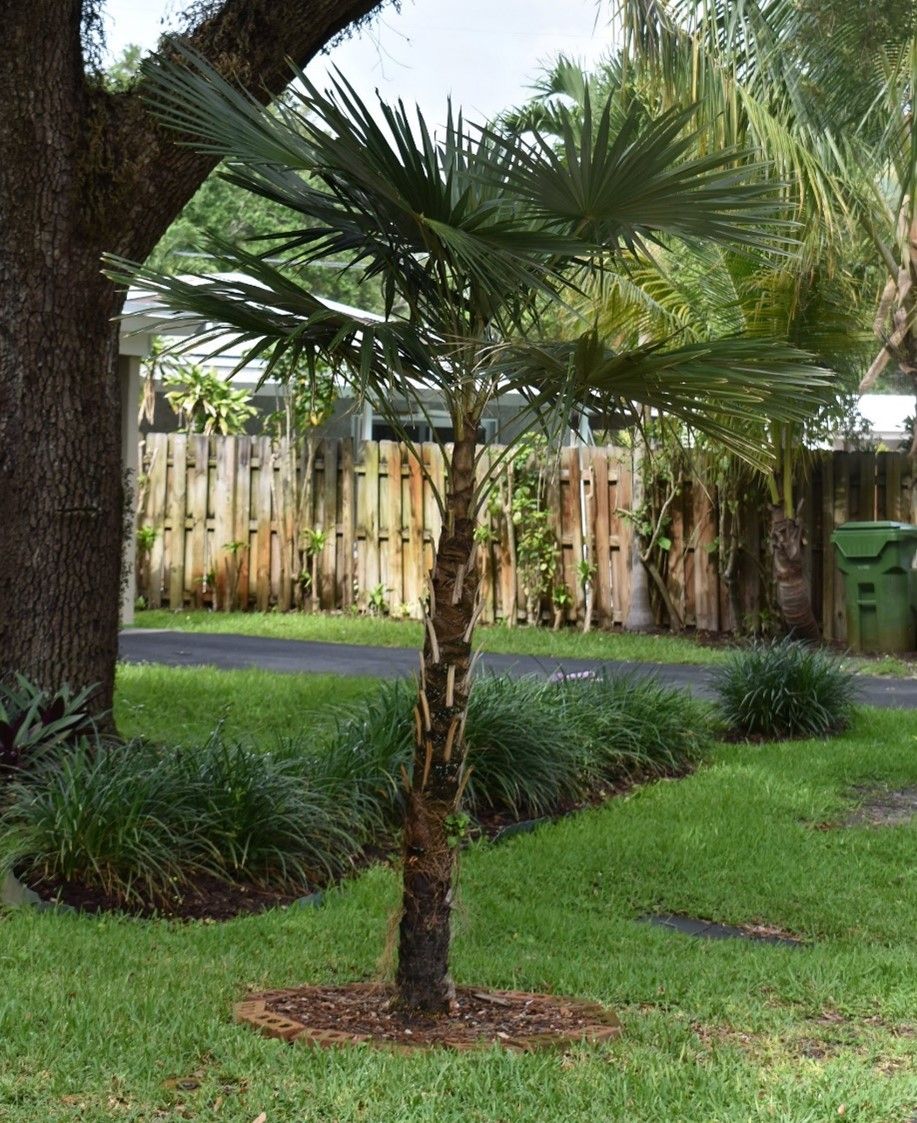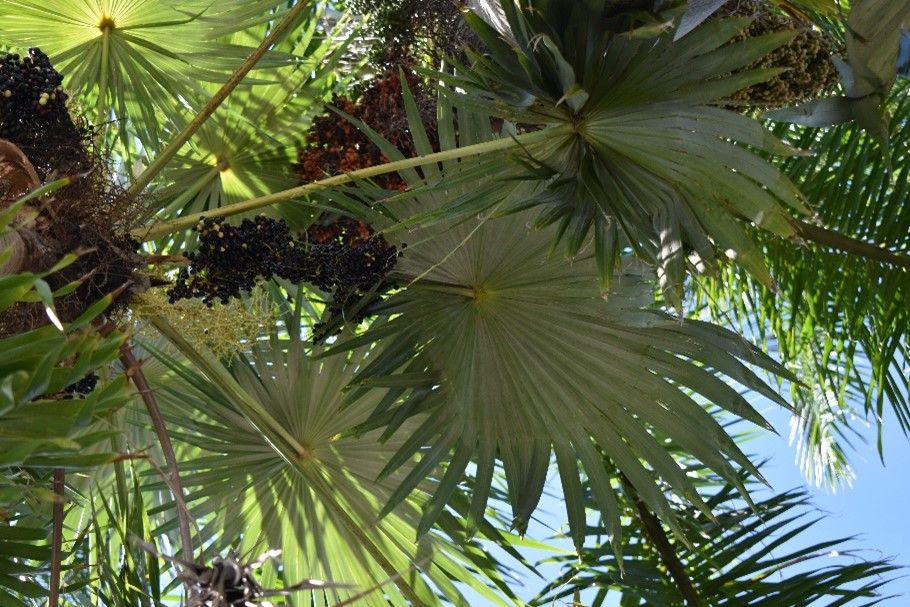Introduction
This slow-growing, small, native Florida palm can reach 20 feet in height but is usually seen at 6 to 10 feet with a spread of 6 feet. The slender silverpalm has distinctive dark blue-green, drooping, delicate, deeply divided palmate leaves which have a beautiful silver color beneath, providing a bright glint in the landscape when the leaves sway in the wind. The 6-inch-wide trunk is either smooth and grey or is sometimes covered with woven, burlap-like fiber. The small, white flowers are borne in profusion on 2-foot-long stalks, hidden among the leaves during the summer. The small, round, purple fruits ripen in late summer and fall.

Credit: Stephen Brown, UF/IFAS
General Information
Scientific name: Coccothrinax argentata
Pronunciation: koe-koe-THRY-nacks ar-jen-TAY-tuh
Common name(s): Silverpalm, thatchpalm
Family: Arecaceae
USDA hardiness zones: 10B through 11 (Figure 2)
Origin: native to North America
Invasive potential: native
Uses: deck or patio; specimen; container or planter; highway median

Description
Height: 6 to 15 feet
Spread: 6 to 7 feet
Crown uniformity: symmetrical
Crown shape: palm, upright/erect
Crown density: open
Growth rate: slow
Texture: coarse
Foliage
Leaf arrangement: spiral (Figure 3)
Leaf type: simple
Leaf margin: entire
Leaf shape: star-shaped
Leaf venation: palmate
Leaf type and persistence: broadleaf evergreen, evergreen
Leaf blade length: 18 to 36 inches
Leaf color: green, blue or blue-green, silver
Fall color: no color change
Fall characteristic: not showy

Credit: Stephen Brown, UF/IFAS
Flower
Flower color: white/cream/gray
Flower characteristics: not showy
Fruit
Fruit shape: round
Fruit length: less than .5 inch
Fruit covering: fleshy
Fruit color: purple
Fruit characteristics: does not attract wildlife; not showy; fruit/leaves not a litter problem
Trunk and Branches
Trunk/bark/branches: branches don't droop; not showy; typically one trunk; thorns
Pruning requirement: little required
Breakage: resistant
Current year twig color: not applicable
Current year twig thickness:
Wood specific gravity: unknown
Culture
Light requirement: full sun, partial sun, or partial shade, shade tolerant
Soil tolerances: clay; sand; loam; alkaline; acidic; well-drained
Drought tolerance: high
Aerosol salt tolerance: high
Other
Roots: not a problem
Winter interest: no
Outstanding tree: no
Ozone sensitivity: unknown
Verticillium wilt susceptibility: resistant
Pest resistance: free of serious pests and diseases
Use and Management
This palm is most suited for residential and commercial landscapes where the unusual blue foliage can be appreciated. It makes a nice accent in a shrub border, and can be massed together to create a dramatic colorful impact. Place it in a low-growing groundcover to provide an exclamation point in the landscape.
Growing in full sun or partial shade, silverpalm will tolerate any well-drained soil. The palm will grow straight up and provide a beautiful blue accent, even in areas receiving only two or three hours of sun. It is highly salt-tolerant and is especially useful for coastal locations and for soils with a high pH.
Propagation is by seed.
Pests and Diseases
No pests or diseases are of major concern.